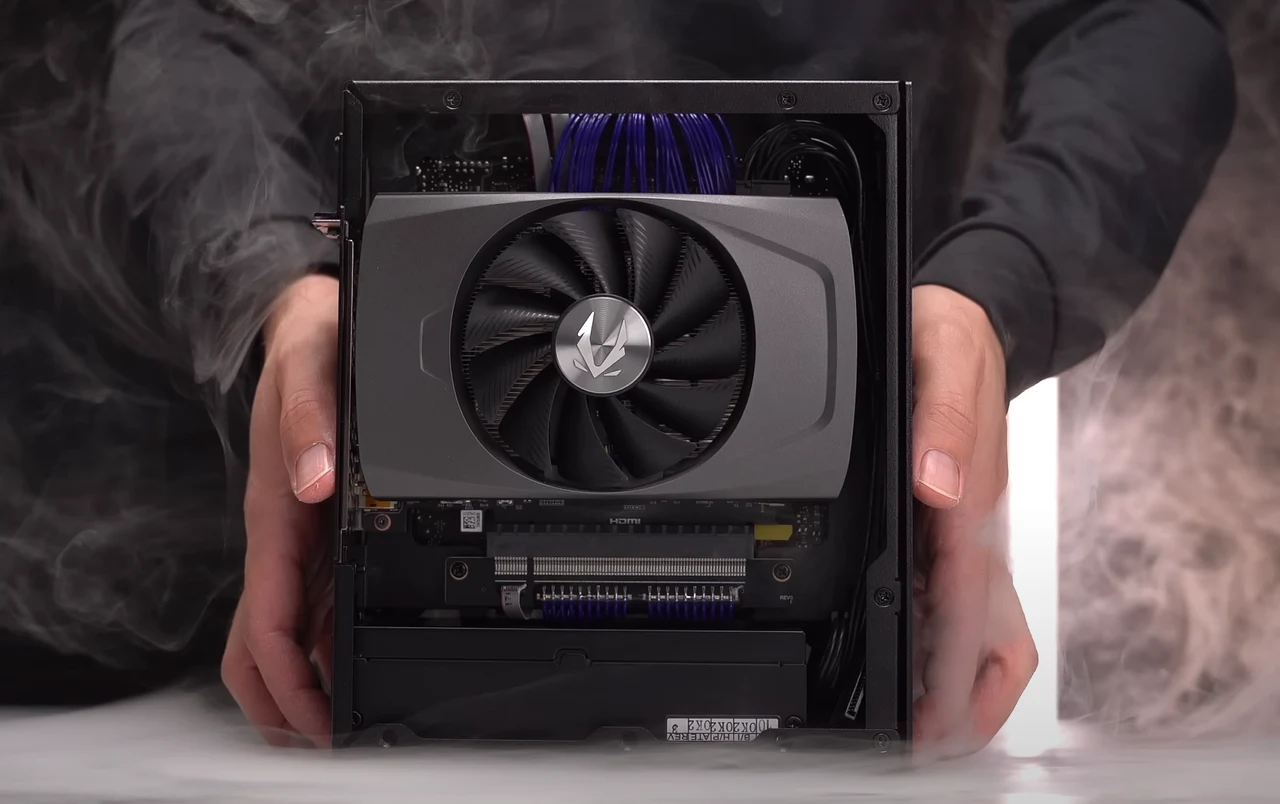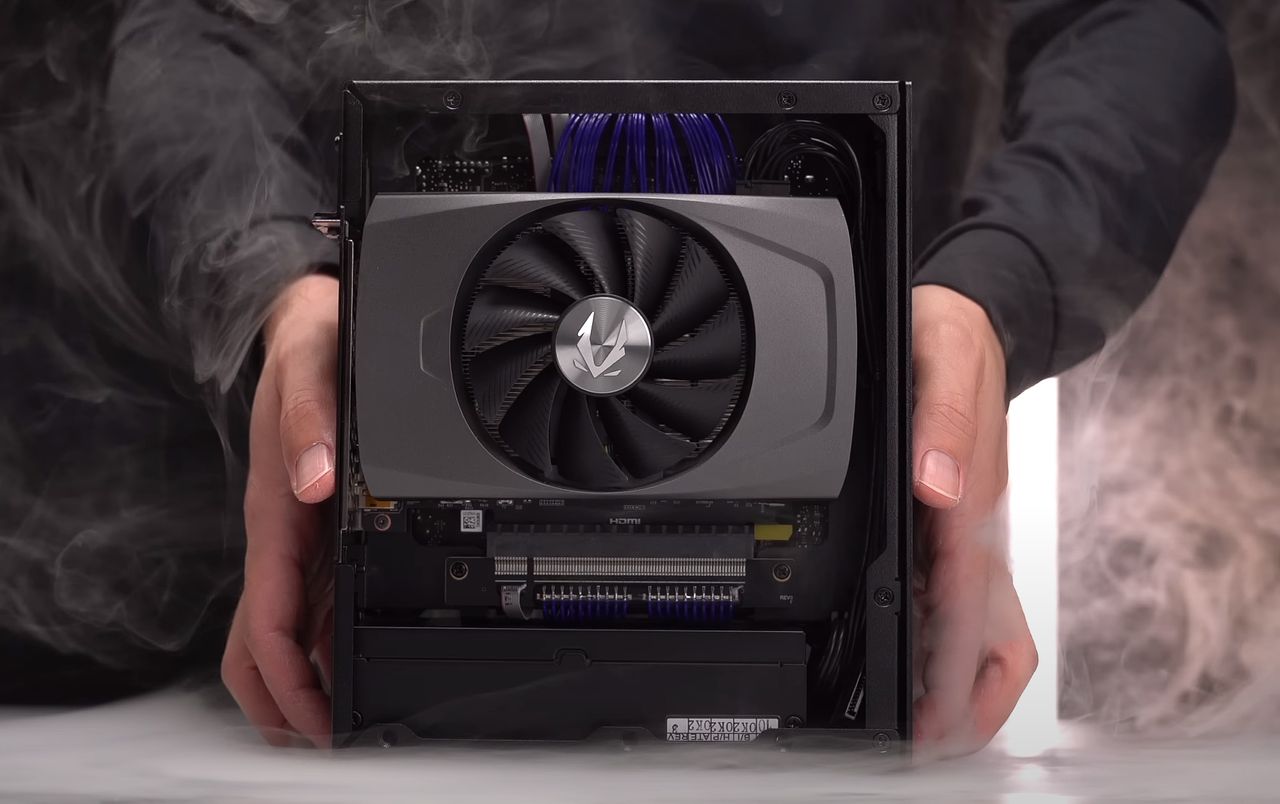
Devyn Johnston has released a fantastic instructional video on how you can build your very own super small 4060 gaming PC. The video below shows the process of building one of the smallest 4060 gaming PCs possible in the Velka 3 case from Velkase which is available to purchase priced at $160 and is the smallest case with ITX length graphics card and internal power supply support at a volume of just 3.99 litre volume.
The latest Velka case revision 3.0 features a more eye-pleasing top appearance with a bottom PSU orientation, motherboard compatibility fixes, a more durable textured powdercoat, and full steel construction. Features include a 3.99 L volume (3.81 L internal), 182 cm² footprint, 37 mm CPU cooler clearance, it is compatible with the Flex ATX power supply, although not not compatible with SFX, and features 175 mm dual-slot graphics card compatible and 42 mm memory clearance and is Mini ITX compatible.
High-performance super small gaming PC
Building super small gaming PCs has become a popular trend for gamers who want high performance in a compact package, that can easily be transported if needed. This build features an Intel i5 13400 CPU and 4060 GPU, a DDR5 system and DDR5 compatible motherboard, a 1TB m.2 SSD from Samsung, and 32GB of Corsair’s Vengeance DDR5 5600 memory. Together with aa Noctua L9A CPU cooler, a dual-slot single fan 4060 from Zotac for the GPU, a 600 W Flex ATX power supply, and the use of the Gkey Shadowcast 2 to enable the use of an iPad as a display.
Powering all these components is a 600 W Flex ATX power supply. This power supply offers enough power to run all the components smoothly, and its small form factor fits perfectly in the Vela 3 case.
The DDR5 system offers greater bandwidth and improved power efficiency compared to its predecessor, DDR4. For this build, 32GB of Corsair’s Vengeance DDR5 5600 memory is chosen. This high-performance memory kit will ensure that the gaming PC can handle any game or application thrown at it.
For storage, a 1TB m.2 SSD from Samsung is used. SSDs offer faster read and write speeds compared to traditional hard drives, which can significantly reduce game load times and improve overall system responsiveness. The m.2 form factor also saves space, which is crucial in a small form factor build like this.
Cooling is another crucial aspect of building a super small 4060 gaming PC. The Noctua L9A CPU cooler is chosen for this build due to its low-profile design and excellent cooling performance. Despite its small size, the Noctua L9A is capable of keeping the Intel i5 13400 CPU cool even under heavy load.
The Vela 3 case from Velkase is the home for all these components. Its sleek, compact design makes it an excellent choice for a small form factor build. Despite its size, the Vela 3 case can accommodate a dual-slot single fan 4060 from Zotac for the GPU, ensuring that the graphics card gets ample airflow for optimal performance.
Features revisions of the latest Velka 3 mini ITX case :
- Textured powdercoat with improved scratch and fingerprint resistance
- Better rubber foot adhesion
- Full powdercoated galvanized steel construction
- Symmetrical top vents when PSU is on the bottom
- Motherboard compatibility fixes
- Slightly fewer screws involved in assembly
- Larger power button without LED
- 5 mm optional side panel offset instead of 2/4 mm. Cleaner appearance when used
Building a super small 4060 gaming PC requires careful selection of components to ensure high performance in a compact package. The combination of the Intel i5 13400 CPU and 4060 GPU, DDR5 system and compatible motherboard, 1TB m.2 SSD, Corsair’s Vengeance DDR5 5600 memory, Noctua L9A CPU cooler, Vela 3 case, dual-slot single fan 4060 from Zotac, 600 W Flex ATX power supply, and Gkey Shadowcast 2 for iPad display integration, offers a powerful yet compact gaming PC that can handle any game or application with ease.
Image Credit: Devyn Johnston
Filed Under: Hardware, Top News
Latest timeswonderful Deals
Disclosure: Some of our articles include affiliate links. If you buy something through one of these links, timeswonderful may earn an affiliate commission. Learn about our Disclosure Policy.






